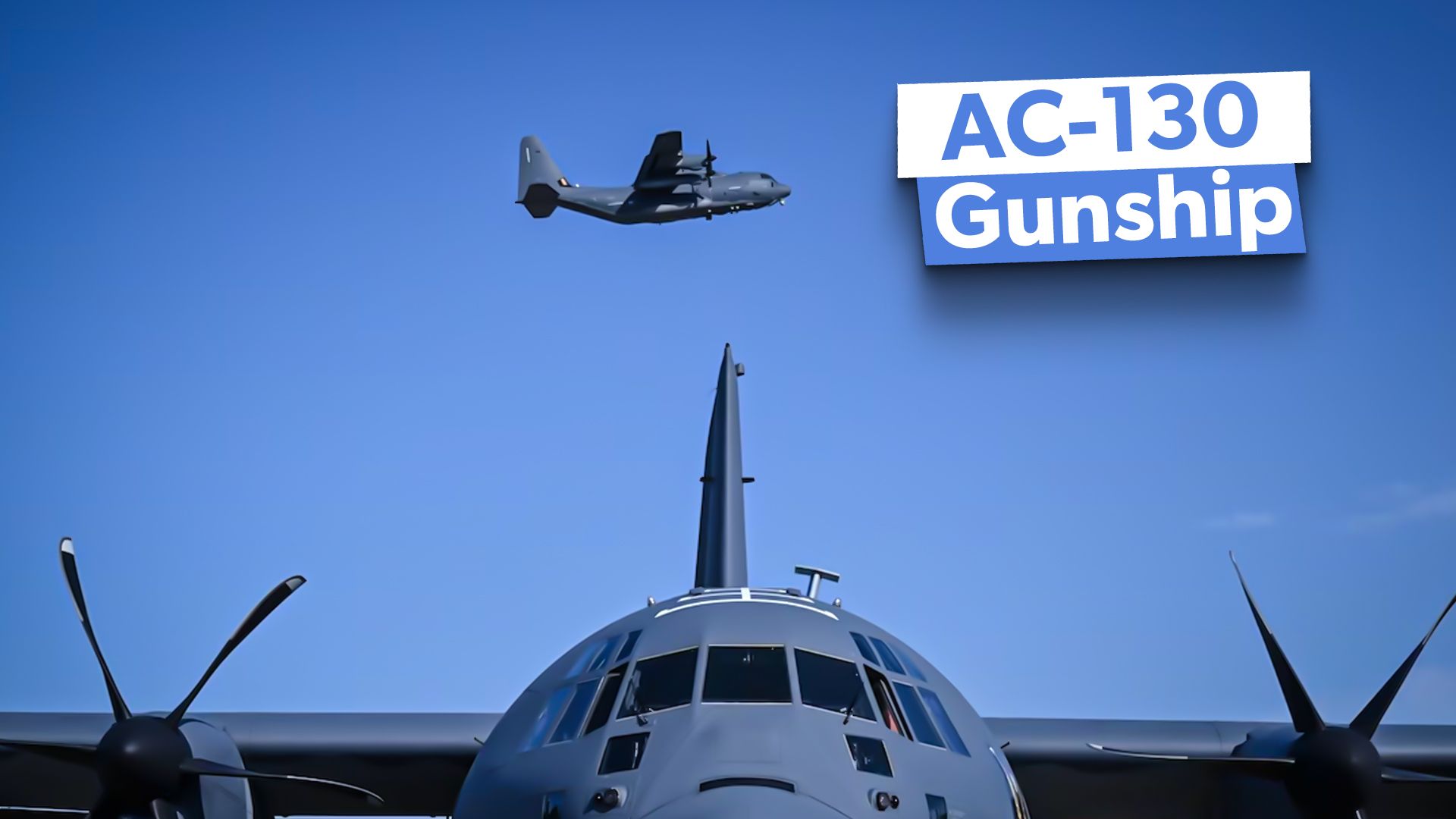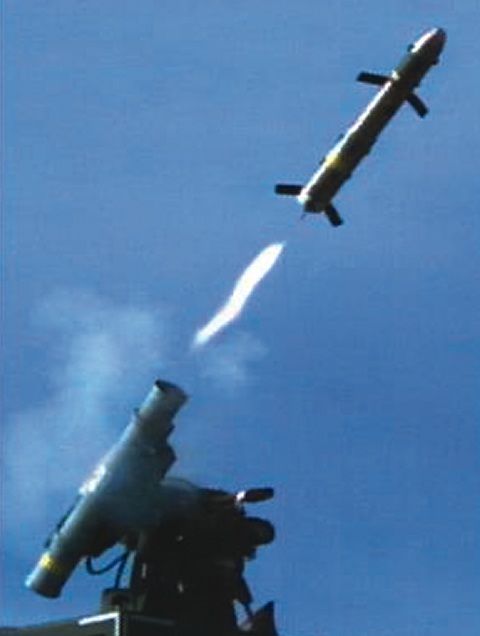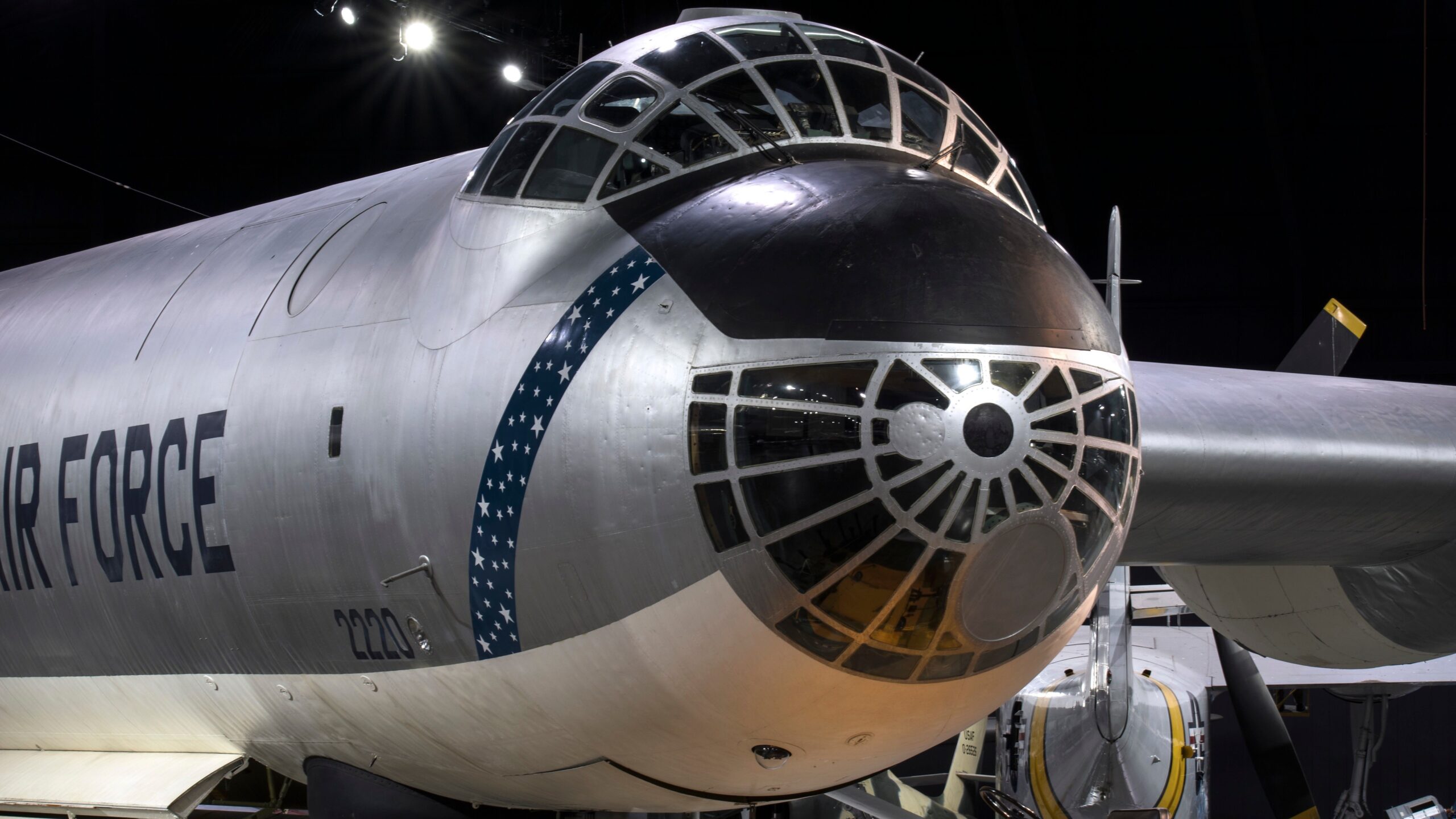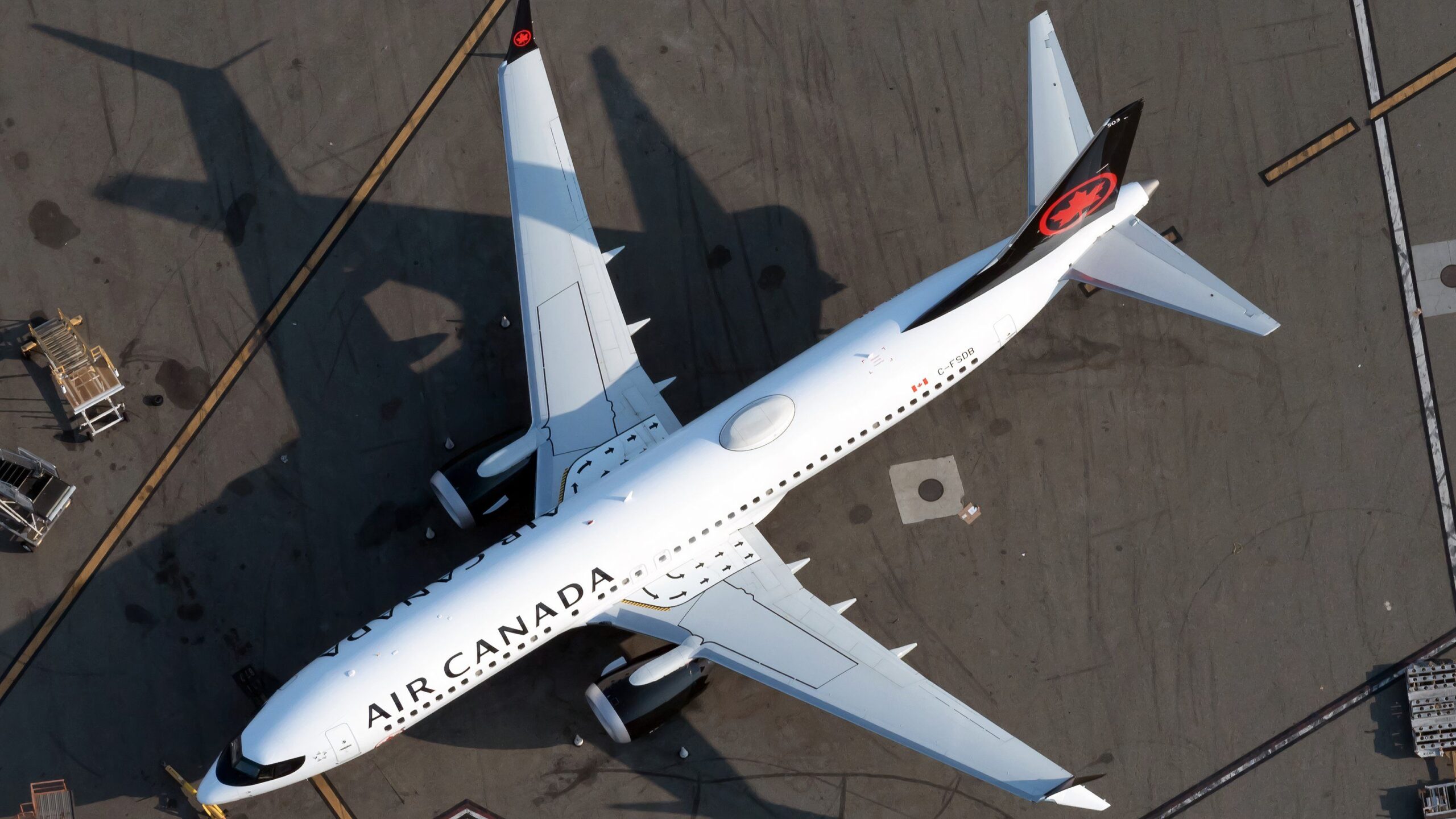Other than perhaps a carpet-bombing strike by a B-52 Stratofortress (AKA the “BUFF”) bomber, no other conventional weapons system in the US Armed Forces arsenal symbolizes “Death From Above” for America’s adversaries quite like the US Air Force’s AC-130 fixed-wing gunship. It is the gun-toting iteration of the classic Lockheed Martin C-130 Hercules transport plane—AKA “Spectre,” “Spooky,” “Stinger II,” or “Ghostrider” (depending upon the specific variant).
Case in point regarding the AC-130’s deadly efficacy: according to one set of official US Air Force Fact Sheets, during the Vietnam War alone, the warbirds were credited with destroying more than 10,000 enemy trucks!
The AC-130 concept and basic platform date back to 1968, during the height of the Vietnam War. However, like many other venerable warbirds in the American arsenal, the design has not remained frozen in time. Rather, it has proven itself readily adaptable to technological updates, thus fulfilling the famous 20th-century Italian airpower theorist Gen. Giulio Douhet’s dictum that “Flexibility is the key to airpower.” Simple Flying now takes a look at the technologies that help the AC-130 continue to maintain its deadly edge.
Breakdown: the AC-130 variants
Before we get into the nitty-gritty of the specifics of the AC-130 modernization programs, it behooves us to list the variants and ages of the basic gunship platform:
- AC-130A “Spectre”: Introduced in 1968; retired in 1995
- AC-130H “Spectre”: Introduced in 1969; retired in 2015
- AC-130U “Spooky II”: Introduced in 1995; retired in 2020
- AC-130W “Stinger II:” Introduced in 2012
- AC-130J “Ghostrider”: Introduced in 2017
The big gun
Might as well start right off the bat with the biggest and most badass metaphorical arrow in the gunship’s quiver, eh?
The 105 mm (4.13 in) cannon (or “howitzer” as some may term it, though some artillery experts question whether that’s a technically correct term for an in-flight cannon) is the biggest and most powerful gun in the USAF arsenal. As far as I can tell, it is also the largest gun placed on any military aircraft, easily dwarfing even the 30 mm (1.18 in) cannon on the A-10 Warthog. For the basis of visual comparison, feast your eyeballs on this Photo Gallery:
Surprisingly, the second-newest iteration of the gunship, the AC-130W, wasn’t initially slated for the 105. However, this conspicuous absence was finally rectified circa June 2019, according to Joseph Trevithick of The War Zone (TWZ). In that article, Mr Trevithick quotes USAF Lt. Gen, Bradley A. Heithold, then head of Air Force Special Operations Command (AFSOC):
“’An AC-130 is a precision strike platform in itself. It precisely delivers very low yield munitions with a 30 [mm gun] and a 105… and they’re very inexpensive to deliver.’”
How inexpensive exactly? According to Trevithick:
“An 105mm high-explosive round costs approximately $400, while a Hellfire missile can cost up to $100,000, depending on the variant.”
Speaking of the Hellfire missile…
The AG0114 Hellfire missile
The Ghostrider and Stinger II variants of the AC-130 also have this air-to-ground missile in their arsenals. This weapons system is more typically associated with rotary-wing gunships such as the AH-64 Apache and smaller and somewhat faster fixed-wing warbirds such as the Cessna AC-208 Combat Caravan, which has been kicking ISIS terrorists derrière on behalf of the post-Saddam Iraqi Air Force (IqAF).
The AC-130W and AC-130J can carry eight Hellfires on their wing pylons. These give the warbirds additional flexibility in the ability to destroy enemy armored personnel carriers (APCs) and main battle tanks (MBTs) alike (not to mention “softer” targets).
Standoff Precision Guided Munitions (PGMs)
Though not classified as “bombers” per se, the newer AC-130s can indeed carry bombs, namely:
- The GBU-39 Small Diameter Bomb (SDB)
- The GBU-69 Small Glide Munition (SGM)
A separate USAF Fact Sheet describes the SDB thus:
“[A]n extended range all-weather, day or night 250-pound class, guided munition. The SDB relies on the Global Positioning System to provide navigation to the target. Additionally, its small size allows increased aircraft loadout to achieve multiple kills per sortie and inherently reduces the probability of collateral damage.”
The GBU-39 has an effective range of 40 nautical miles (46.03 mi; 74.08 km). The gunships can carry eight GBU-39s on wing pylons.
Meanwhile, the GBU-69 SGM is a standoff PGM specifically tailored to Special Operations Forces (SOF) mission requirements. It has a 36-lb (16.32 kg) blast fragmentation warhead capable of 20 nautical miles (23 mi; 37 km). It can be deployed from the AC-130J’s ramp-mounted Common Launch Tubes or dropped conventionally.
AGM-176 Griffin missile
One good AGM deserves another, I reckon. According to GlobalSecurity.org:
“Griffin is Raytheon’s INS/GPS based ‘mini-missile’ which can be configured for use on aircraft, ships, or ground launch. The Griffin® missile is a multi-platform, multi-service weapon that has a proven track record for successful rapid integration on land, sea and air platforms.”
The Griffin has a 13-pound (5.89 kg) warhead and an effective operational range of 10.86 nautical miles (12.5 miles; 20.1 km) from altitude.
A hearty “HOOYAH” to the AC-130 and its hard-fighting AFSOC crews!






